Stadium LED Display
Sports LED Display Recommendation
LED screens play important roles in sports stadiums worldwide as perimeter LED displays, scoreboards, and displays to show real-time updates, statistics, advertisements, etc.
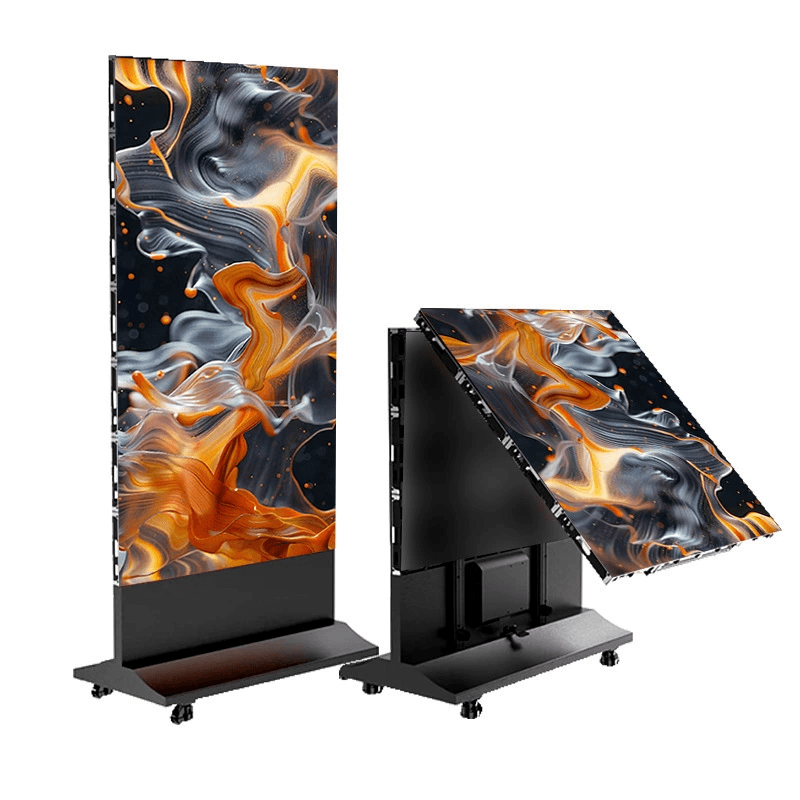
LED display poster
LED poster screens can be folded to instantly transform into double-sided advertising
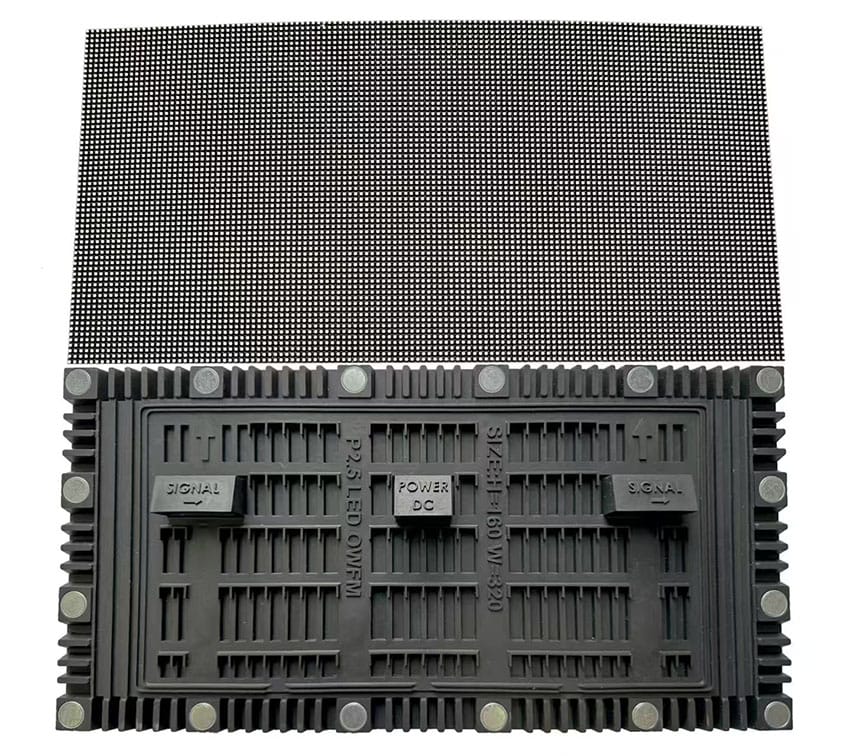
Outdoor flexible LED display
P2.5mm/P3.076mm/P4mm/P5mm
<div class="elementor-element elementor-element-7ed9ef0 elementor-widget elementor-widget-text-editor" data-id="7ed9ef0" data-element_type="widget"
P2 GOB indoor led display module
Description
P2mm GOB indoor led display module 320mmx160mm Best Color Uniformity
Contact Us
Order Stadium LED Display.Please feel free to contact us at any time, and we will respond to you within 24 hours.
The Ultimate Guide to Choosing the Perfect LED Display for Sports Stadiums
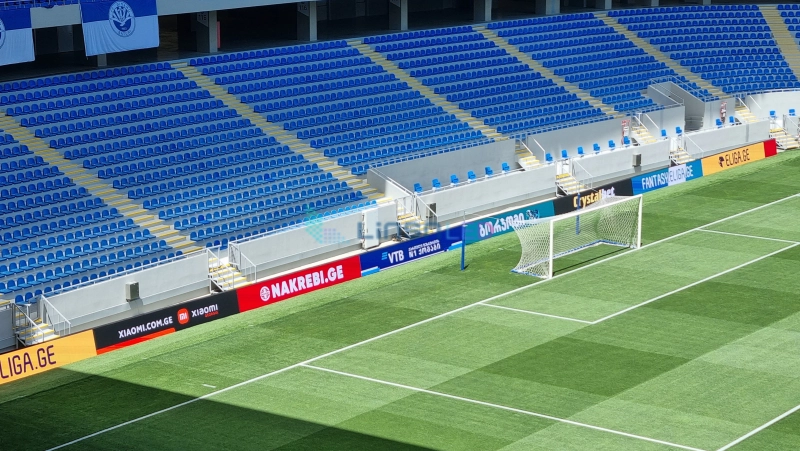
Perimeter LED Display
LED-CITY perimeter LED displays usually have a driver IC with a 3840Hz refresh rate, ensuring smooth playback of images without any flickering, especially. This feature is particularly important for live video programming during sporting events.
Our 0-90° adjustable back brackets can support it adjust to different angles and reach more audiences.
The rubber mask and cushion can protect people, and the high visual performance enables the contents can be shown clearly.
LED Scoreboard
LED scoreboards are the heart and soul of any sports venue, providing real-time updates on scores, game statistics, and crucial information. These dynamic displays not only keep fans informed but also enhance the overall viewing experience by showcasing replays, graphics, and animations.
LED scoreboards come in various sizes and configurations, ranging from compact solutions for smaller venues to massive, high-resolution displays that dominate the stadium landscape. With their ability to display vibrant colors, crisp text, and detailed graphics, these digital scoreboards ensure that every fan stays connected to the action, regardless of their seating position.
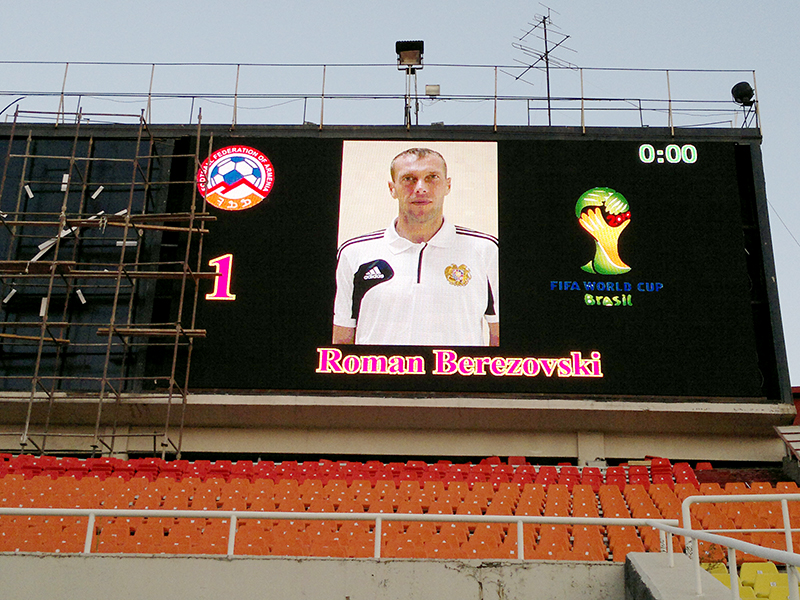
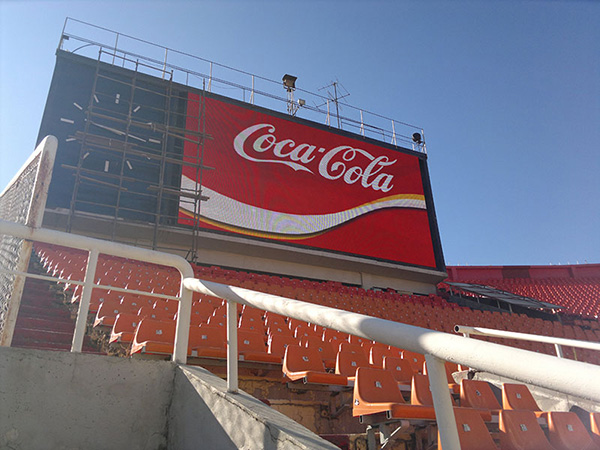
LED Billboard
While LED scoreboards focus on game-related content, LED billboards serve as powerful advertising and branding platforms. These large-scale displays, strategically positioned throughout the stadium, offer prime real estate for sponsors, advertisers, and venue operators to showcase their messages, logos, and promotional content.
LED billboards are designed to capture the attention of fans, delivering high-impact visuals that leave a lasting impression. From dynamic advertisements to interactive fan experiences, these digital canvases provide a versatile platform for sports venues to generate additional revenue streams and enhance the overall fan experience.
The colorful LED screens are like ribbons that decorate and beautify sports stadiums.
Another significant benefit of LED fence displays is their versatility in terms of advertising and sponsorship opportunities. Brands and sponsors can leverage these displays to showcase their products, services, or promotional messages in a highly visible and impactful manner. The dynamic nature of LED fence displays allows for seamless content rotation, enabling multiple sponsors or advertisers to showcase their content throughout the duration of an event.
LED Fence Display
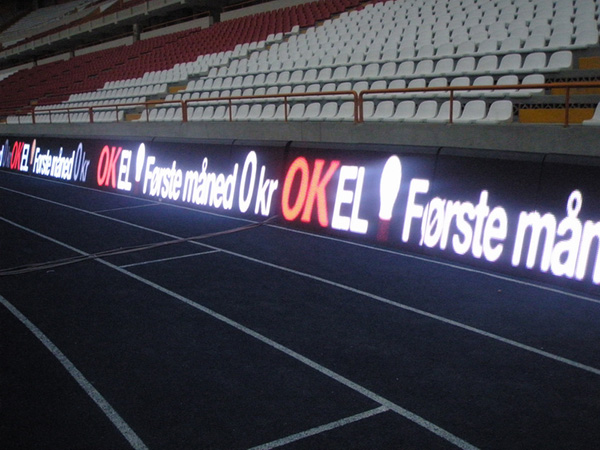
In the realm of modern sports stadiums, LED displays have emerged as an indispensable component, revolutionizing the way fans experience the game. These cutting-edge visual systems not only enhance the overall spectacle but also play a crucial role in delivering real-time information, statistics, and engaging content. As we delve into the world of LED displays for sports stadiums, we embark on a journey to uncover the perfect solution that seamlessly blends technology, functionality, and captivating visuals.
LED displays have become an integral part of sports stadiums, elevating the fan experience to new heights. These dynamic visual systems offer a multitude of benefits, from displaying live scores and replays to showcasing vibrant graphics and animations. They create an immersive atmosphere that keeps spectators engaged, informed, and entertained throughout the entire event.
In this comprehensive guide, we will explore the various aspects of LED displays for sports stadiums, equipping you with the knowledge and insights necessary to make an informed decision. Whether you’re a stadium owner, event organizer, or a sports enthusiast, this guide will empower you to choose the perfect LED display that aligns with your vision and exceeds the expectations of your audience.
- Benefits of using LED displays in sports stadiums
- Types of LED displays for sports stadiums – LED scoreboards and LED billboards
- Factors to consider when choosing an LED display for a sports stadium
- Understanding the technical specifications of LED displays
- Case studies: Successful implementation of LED displays in sports stadiums
- Conclusion: Choosing the perfect LED display for your sports stadium
1.Benefits of using LED displays in sports stadiums
The implementation of LED displays in sports stadiums has revolutionized the way fans experience live events. These cutting-edge visual systems offer a multitude of benefits that enhance the overall spectacle and create an unforgettable atmosphere. Let’s delve into the key advantages of incorporating LED displays into your sports stadium:
Enhanced Fan Experience: LED displays provide a dynamic and engaging platform for displaying live scores, replays, and real-time statistics. Fans can stay up-to-date with the action, ensuring they never miss a crucial moment. Additionally, these displays can showcase vibrant graphics, animations, and promotional content, creating an immersive and entertaining environment.
Increased Revenue Opportunities: LED displays offer valuable advertising and sponsorship opportunities. By displaying brand logos, promotional messages, and targeted advertisements, stadiums can generate additional revenue streams and maximize their return on investment.
Improved Visibility and Clarity: LED displays boast exceptional brightness and clarity, ensuring that the content is visible from virtually any vantage point within the stadium. This ensures that every fan can enjoy a clear and unobstructed view, regardless of their seating location.
Energy Efficiency and Low Maintenance: Modern LED displays are designed to be energy-efficient, reducing the overall operating costs for stadiums. Additionally, they require minimal maintenance, resulting in lower long-term expenses and increased reliability.
Versatility and Flexibility: LED displays offer unparalleled versatility, allowing stadiums to showcase a wide range of content, from live game footage to pre-recorded videos and animations. This flexibility enables stadiums to cater to diverse events and audiences, maximizing the utilization of their facilities.
By leveraging the power of LED displays, sports stadiums can elevate the fan experience, generate additional revenue streams, and create a dynamic and engaging atmosphere that keeps spectators coming back for more.
When it comes to LED displays for sports stadiums, two primary types stand out: LED scoreboards and LED billboards. Each type serves a distinct purpose and offers unique features tailored to the specific needs of sports venues. Let’s explore these two types in detail:
LED Scoreboards
LED scoreboards are the heart and soul of any sports stadium, providing real-time updates on scores, game statistics, and other crucial information. These displays are strategically positioned to ensure optimal visibility for fans, allowing them to stay informed and engaged throughout the entire event.
Live Scoring: LED scoreboards display real-time scores, allowing fans to keep track of the game’s progress without missing a beat.
Player and Team Statistics: Beyond just displaying scores, LED scoreboards can showcase player and team statistics, such as goals scored, fouls committed, and other relevant data, enhancing the overall fan experience.
Customizable Content: Modern LED scoreboards offer the flexibility to display customized content, including team logos, player profiles, and sponsor advertisements, further enhancing the overall branding and marketing efforts.
Durability and Weatherproofing: Designed to withstand harsh outdoor conditions, LED scoreboards are built to be durable and weatherproof, ensuring reliable performance even in challenging environments.
LED Billboards
LED billboards, on the other hand, serve as powerful marketing and advertising tools within sports stadiums. These large-scale displays are strategically positioned to capture the attention of fans, offering a dynamic platform for showcasing brand messages, promotional content, and engaging visuals.
Advertising and Sponsorship Opportunities: LED billboards provide valuable advertising real estate, allowing stadiums to generate additional revenue streams by selling advertising space to sponsors and brands.
Dynamic Content: Unlike traditional static billboards, LED billboards offer the ability to display dynamic content, including videos, animations, and interactive visuals, creating a captivating and engaging experience for fans.
High Visibility and Impact: With their large size and vibrant displays, LED billboards command attention and leave a lasting impression on fans, making them an effective marketing tool for brands and sponsors.
Versatility and Flexibility: LED billboards can be easily reconfigured and updated, allowing stadiums to adapt their content based on specific events, campaigns, or sponsorship agreements.
By combining the strengths of LED scoreboards and LED billboards, sports stadiums can create a comprehensive visual experience that not only keeps fans informed and engaged but also provides valuable marketing and advertising opportunities.
2.Types of LED displays for sports stadiums – LED scoreboards and LED billboards
When it comes to LED displays for sports stadiums, two primary types stand out: LED scoreboards and LED billboards. Each type serves a distinct purpose and offers unique features tailored to the specific needs of sports venues. Let’s explore these two types in detail:
LED Scoreboards
LED scoreboards are the heart and soul of any sports stadium, providing real-time updates on scores, game statistics, and other crucial information. These displays are strategically positioned to ensure optimal visibility for fans, allowing them to stay informed and engaged throughout the entire event.
Live Scoring: LED scoreboards display real-time scores, allowing fans to keep track of the game’s progress without missing a beat.
Player and Team Statistics: Beyond just displaying scores, LED scoreboards can showcase player and team statistics, such as goals scored, fouls committed, and other relevant data, enhancing the overall fan experience.
Customizable Content: Modern LED scoreboards offer the flexibility to display customized content, including team logos, player profiles, and sponsor advertisements, further enhancing the overall branding and marketing efforts.
Durability and Weatherproofing: Designed to withstand harsh outdoor conditions, LED scoreboards are built to be durable and weatherproof, ensuring reliable performance even in challenging environments.
LED Billboards
LED billboards, on the other hand, serve as powerful marketing and advertising tools within sports stadiums. These large-scale displays are strategically positioned to capture the attention of fans, offering a dynamic platform for showcasing brand messages, promotional content, and engaging visuals.
Advertising and Sponsorship Opportunities: LED billboards provide valuable advertising real estate, allowing stadiums to generate additional revenue streams by selling advertising space to sponsors and brands.
Dynamic Content: Unlike traditional static billboards, LED billboards offer the ability to display dynamic content, including videos, animations, and interactive visuals, creating a captivating and engaging experience for fans.
High Visibility and Impact: With their large size and vibrant displays, LED billboards command attention and leave a lasting impression on fans, making them an effective marketing tool for brands and sponsors.
Versatility and Flexibility: LED billboards can be easily reconfigured and updated, allowing stadiums to adapt their content based on specific events, campaigns, or sponsorship agreements.
By combining the strengths of LED scoreboards and LED billboards, sports stadiums can create a comprehensive visual experience that not only keeps fans informed and engaged but also provides valuable marketing and advertising opportunities.
3.Factors to consider when choosing an LED display for a sports stadium
Selecting the perfect LED display for your sports stadium requires careful consideration of various factors to ensure optimal performance, durability, and a seamless integration into your venue. By taking the time to evaluate these crucial aspects, you can make an informed decision that aligns with your specific needs and requirements. Let’s explore the key factors to consider when choosing an LED display for your sports stadium:
Viewing Distance and Angle: The viewing distance and angle play a crucial role in determining the appropriate pixel pitch and resolution of the LED display. Stadiums with longer viewing distances may require a smaller pixel pitch for optimal visibility, while venues with varying seating angles may benefit from displays with wider viewing angles.
Brightness and Contrast: The brightness and contrast of the LED display are essential for ensuring clear and vivid visuals, even in challenging lighting conditions. Outdoor stadiums may require displays with higher brightness levels to combat sunlight interference, while indoor venues may prioritize contrast for optimal viewing experiences.
Resolution and Pixel Density: The resolution and pixel density of the LED display directly impact the sharpness and clarity of the displayed content. Higher resolutions and pixel densities provide more detailed and crisp visuals, making them ideal for displaying intricate graphics, videos, and text-based information.
Durability and Weatherproofing: Sports stadiums are exposed to a wide range of environmental conditions, including extreme temperatures, precipitation, and potential impact from flying objects. Therefore, choosing an LED display with robust construction, weatherproofing, and impact resistance is crucial for ensuring long-lasting performance and reliability.
Power Consumption and Energy Efficiency: The power consumption and energy efficiency of the LED display should be carefully evaluated, as it can significantly impact the overall operating costs of the stadium. Energy-efficient displays not only reduce utility expenses but also contribute to sustainable practices and environmental responsibility.
Ease of Installation and Maintenance: The installation and maintenance processes of the LED display should be considered, as they can impact the overall project timeline and ongoing operational costs. Displays with modular designs and user-friendly maintenance features can streamline these processes and minimize downtime.
Content Management and Control Systems: The content management and control systems associated with the LED display play a crucial role in ensuring seamless operation and efficient content delivery. User-friendly interfaces, remote access capabilities, and integration with existing systems should be evaluated to ensure a smooth and efficient workflow.
Vendor Reputation and Support: Partnering with a reputable and experienced vendor for your LED display solution is essential. Consider factors such as the vendor’s track record, industry expertise, and after-sales support to ensure reliable performance and prompt assistance when needed.
By carefully evaluating these factors and prioritizing the specific needs of your sports stadium, you can make an informed decision that delivers an exceptional visual experience for your fans while ensuring long-term reliability and operational efficiency.
4.Understanding the technical specifications of LED displays
When it comes to selecting the perfect LED display for your sports stadium, understanding the technical specifications is crucial. These specifications provide valuable insights into the performance, capabilities, and suitability of the display for your specific needs. By gaining a comprehensive understanding of these technical aspects, you can make an informed decision that aligns with your requirements and ensures optimal results.
Here are some key technical specifications to consider when evaluating LED displays:
Pixel Pitch: The pixel pitch refers to the distance between individual LED pixels, measured in millimeters. A smaller pixel pitch results in higher resolution and sharper visuals, making it ideal for closer viewing distances. Conversely, a larger pixel pitch is suitable for longer viewing distances and can provide cost savings.
Resolution: The resolution of an LED display refers to the number of pixels it contains, typically expressed in horizontal and vertical dimensions (e.g., 1920 x 1080). Higher resolutions offer more detailed and crisp visuals, making them suitable for displaying intricate graphics, videos, and text-based information.
Brightness: Brightness is measured in nits (candelas per square meter) and determines the display’s visibility in various lighting conditions. Outdoor LED displays often require higher brightness levels to combat sunlight interference, while indoor displays may prioritize energy efficiency and lower brightness levels.
Contrast Ratio: The contrast ratio measures the difference between the brightest and darkest areas of the display. Higher contrast ratios result in more vibrant and vivid visuals, enhancing the overall viewing experience.
Viewing Angle: The viewing angle refers to the maximum angle at which the display can be viewed without significant degradation in image quality. Wider viewing angles ensure optimal visibility from various seating positions within the stadium.
Refresh Rate: The refresh rate determines how frequently the display updates its content, measured in Hertz (Hz). Higher refresh rates reduce motion blur and provide smoother visuals, particularly for fast-moving content such as live sports broadcasts or video replays.
Power Consumption and Heat Dissipation: LED displays consume varying amounts of power, and their heat dissipation capabilities can impact their overall efficiency and lifespan. Evaluating these specifications is crucial for ensuring energy efficiency and proper thermal management.
Ingress Protection (IP) Rating: The IP rating indicates the level of protection against solid objects and liquids, ensuring the display’s durability in various environmental conditions, such as rain, snow, or dust.
Certifications and Compliance: Ensure that the LED display meets relevant industry certifications and complies with local regulations and safety standards, such as EMC (Electromagnetic Compatibility), FCC (Federal Communications Commission), and CE (Conformité Européenne) certifications.
By thoroughly understanding these technical specifications and aligning them with your specific requirements, you can make an informed decision that delivers the desired visual performance, durability, and operational efficiency for your sports stadium.
5.Case studies: Successful implementation of LED displays in sports stadiums
To truly appreciate the transformative power of LED displays in sports stadiums, it is essential to explore real-world examples of successful implementations. These case studies not only showcase the versatility and impact of LED displays but also provide valuable insights into the planning, execution, and outcomes of such projects. Let’s delve into some notable case studies that highlight the effective integration of LED displays in sports venues:
Case Study 1: AT&T Stadium (Dallas, Texas)
The AT&T Stadium, home to the Dallas Cowboys, boasts one of the largest and most impressive LED display installations in the world. The stadium features a massive center-hung video board, measuring an incredible 60 yards (54.9 meters) wide and 25 yards (22.9 meters) tall. This colossal LED display, consisting of over 30 million individual LED pixels, provides fans with an unparalleled viewing experience, displaying live game footage, replays, and engaging content with exceptional clarity and detail.
In addition to the center-hung display, the AT&T Stadium also features multiple LED ribbon boards that encircle the entire venue, allowing fans to stay updated with real-time scores, statistics, and other relevant information. The implementation of these state-of-the-art LED displays has transformed the fan experience, creating an immersive and captivating atmosphere that keeps spectators engaged and entertained throughout the entire event.
Case Study 2: Mercedes-Benz Stadium (Atlanta, Georgia)
The Mercedes-Benz Stadium, home to the Atlanta Falcons and Atlanta United FC, showcases a remarkable integration of LED displays throughout the venue. The centerpiece of this installation is the iconic 360-degree halo video board, which encircles the entire stadium at the top of the lower bowl. This massive LED display, measuring over 60,000 square feet (5,574 square meters), provides fans with an unobstructed view of live action, replays, and vibrant visuals from virtually any seat in the stadium.
In addition to the halo video board, the Mercedes-Benz Stadium features numerous other LED displays, including ribbon boards, fascia displays, and concourse screens, ensuring that fans remain connected and informed throughout their visit. The seamless integration of these LED displays has not only enhanced the overall fan experience but has also created new revenue streams through advertising and sponsorship opportunities.
6.Conclusion: Choosing the perfect LED display for your sports stadium
To ensure a seamless and trouble-free event experience, it’s essential to follow proper maintenance and troubleshooting procedures for rental LED screens. Here are some valuable tips to keep in mind:
- Regular Cleaning and Inspection:LED screens are susceptible to dust, dirt, and other environmental factors that can affect their performance and visual quality. Conduct regular cleaning and inspections to ensure that the screens are free from debris and functioning optimally.
- Cable Management:Proper cable management is crucial for preventing potential issues and ensuring a safe and organized setup. Secure cables properly, avoid excessive bending or twisting, and protect them from potential damage or interference.
- Temperature and Humidity Control:LED screens are sensitive to extreme temperatures and humidity levels. Ensure that the environmental conditions at the event site are within the recommended operating ranges to prevent overheating, condensation, or other issues that could impact performance.
- Power and Signal Monitoring:Regularly monitor the power supply and signal distribution to the LED screens. Fluctuations or interruptions in power or signal can cause display issues or even permanent damage to the equipment.
- Backup Systems and Contingency Plans:It’s always wise to have backup systems and contingency plans in place in case of unexpected issues or failures. This could include spare components, alternative signal sources, or even a backup LED screen setup, depending on the scale and importance of your event.
- Manufacturer’s Guidelines:Follow the manufacturer’s guidelines and recommendations for maintenance, troubleshooting, and repair procedures. These guidelines are designed to ensure the longevity and optimal performance of the LED screens.
- Professional Technical Support:Work closely with the rental LED screen provider and their technical support team. They have extensive experience and expertise in troubleshooting and resolving any issues that may arise during your event.
By implementing these maintenance and troubleshooting tips, you can minimize the risk of disruptions, ensure optimal performance, and provide a seamless and visually stunning experience for your audience.
Categories
Outdoor LED Display
Indoor LED Display
Sports LED Display
Commercial LED Display
Transparent LED Display
LED Poster Display
Mobile LED Display
Classic LED Display
Outdoor LED Module
Indoor LED Module
Flexible LED Module
GOB LED Module
Get Free Sample
Have LED projects? Not sure how to choose a led display screen? Won’t make a proposal for the first party?Please feel free to contact us at any time, we will respond to you in 24 hours.
